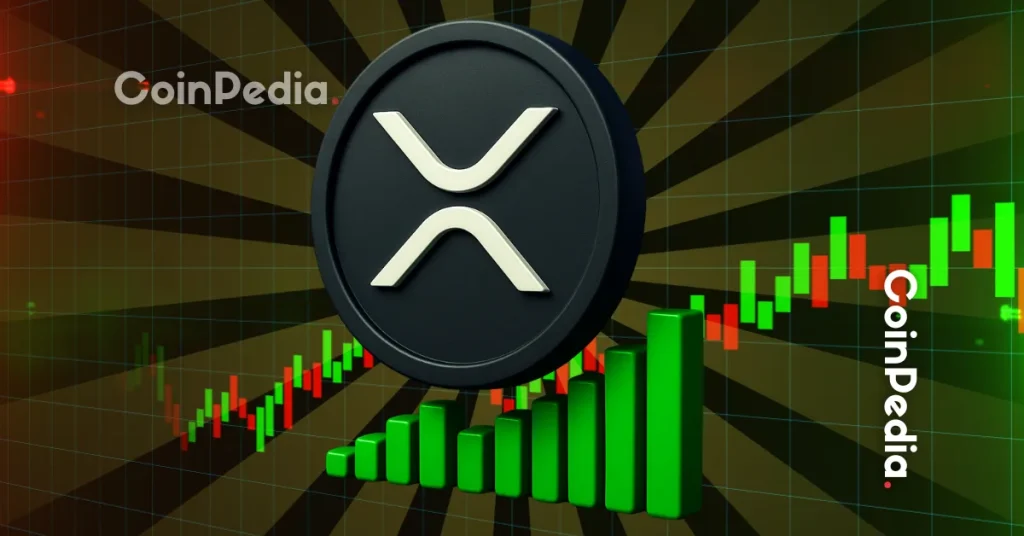BitcoinWorld Critical EUR/GBP Target: UBS Maintains Bearish Pound Forecast Amid Economic Headwinds In the dynamic world of global finance, where every shift can create ripple effects across various asset classes, understanding major bank forecasts is paramount. Even for those deeply entrenched in the cryptocurrency space, traditional forex markets offer critical insights into broader economic sentiment and capital flows. Today, we’re diving into a significant development: UBS, a titan in the banking sector, has reiterated its UBS bearish pound stance, setting a distinct EUR/GBP target . This isn’t just a number; it’s a reflection of deep-seated economic analysis that could influence investment decisions far beyond currency trading. Let’s unpack what this means for the British Pound and the broader financial landscape. Understanding the UBS Bearish Pound Stance: Why the Pessimism? When a major financial institution like UBS declares a UBS bearish pound position, it sends a clear signal to the market. A ‘bearish’ stance implies that the bank expects the currency, in this case, the British Pound (GBP), to weaken against other major currencies, particularly the Euro (EUR). But what underpins this outlook? UBS’s analysis typically considers a confluence of factors, ranging from macroeconomic indicators to central bank policies and geopolitical developments. At its core, the current pessimism stems from several key areas: Economic Growth Disparity: The UK economy has faced persistent challenges, with slower growth compared to some of its European counterparts. High inflation has eroded consumer purchasing power, and business investment has been hesitant. Inflationary Pressures: While inflation has been a global issue, the UK has struggled with persistent price pressures, leading to a cost-of-living crisis. This can force the Bank of England (BoE) into a difficult balancing act: raise rates to combat inflation, potentially stifling growth, or risk inflation becoming entrenched. Interest Rate Divergence: The pace and trajectory of interest rate hikes by the Bank of England versus the European Central Bank (ECB) are crucial. If the market perceives the BoE as nearing the end of its tightening cycle, or if the ECB continues to signal more aggressive hikes, it can make the Euro more attractive relative to the Pound. Geopolitical and Trade Headwinds: Lingering effects of Brexit on trade, labor mobility, and investment continue to weigh on the UK’s economic prospects. Global uncertainties, energy price volatility, and supply chain disruptions also play a significant role. These elements combine to paint a challenging picture for the Pound, leading UBS to anticipate further depreciation. Decoding the EUR/GBP Target and its Implications The specific EUR/GBP target set by UBS is a focal point for currency traders and investors. While the exact figure can fluctuate, let’s consider a hypothetical target of 0.88 for EUR/GBP. This means UBS expects it will take 0.88 Euros to buy one British Pound, implying a weakening of the Pound against the Euro. For context, if the pair is currently trading at, say, 0.85, a target of 0.88 suggests a significant move in favor of the Euro. What are the implications of such a target? For Traders: Those holding GBP assets or looking to trade the pair might consider shorting the Pound against the Euro, or adjusting their positions to benefit from a rising EUR/GBP. It signals a potential trading opportunity based on a well-researched institutional view. For Businesses: UK businesses that import from the Eurozone would find their costs increasing, as they would need more Pounds to buy the same amount of Euros. Conversely, UK exporters to the Eurozone might find their goods more competitively priced. For Investors: International investors holding UK assets might see the value of their holdings decrease when converted back to their home currency if that currency is stronger than the Pound. It can influence capital allocation decisions. Broader Economic Impact: A weaker Pound can make imports more expensive, potentially fueling inflation, but it can also boost exports, supporting economic activity in certain sectors. This target is not merely a prediction; it’s a strategic guide for market participants, indicating a strong conviction from a leading financial institution. What’s Driving the Pound Forecast? A Deeper Dive To truly grasp the pound forecast , we need to examine the fundamental economic and policy divergences between the UK and the Eurozone. It’s a complex interplay of forces that shapes currency valuations. Inflationary Dynamics: A Tale of Two Regions Both the UK and the Eurozone have battled high inflation, but the underlying drivers and persistence have varied. In the UK, inflation has been particularly sticky, driven by a tight labor market, energy costs, and the ongoing impact of supply chain issues. The Eurozone has also faced significant inflation, but the ECB’s response and the broader economic structure differ. Central Bank Policies: The BoE vs. The ECB The monetary policy decisions of the Bank of England (BoE) and the European Central Bank (ECB) are perhaps the most influential factors. Currency strength is often tied to interest rate differentials. If the BoE is perceived to be less hawkish (i.e., less inclined to raise rates aggressively) than the ECB, capital tends to flow towards the currency offering higher yields – in this scenario, potentially the Euro. Here’s a simplified comparison of factors influencing their decisions: Factor United Kingdom (BoE) Eurozone (ECB) Inflation Outlook Persistent, broad-based pressures, wage growth concerns. High, but potentially peaking, varying across member states. Economic Growth Slower, recession risks, post-Brexit challenges. Mixed, some resilience, energy crisis impact. Interest Rate Trajectory Potentially nearing peak, careful balancing act. Still in tightening phase, scope for further hikes. Fiscal Policy High government debt, potential for austerity. Varied national fiscal policies, EU-level coordination. This divergence in policy and economic health significantly influences the pound forecast . Navigating the Forex Market Analysis Landscape For investors and traders, understanding forex market analysis is crucial, especially when facing a strong institutional view like UBS’s. Forex markets are incredibly liquid and react swiftly to new information. A comprehensive analysis typically involves both fundamental and technical approaches. Fundamental Analysis: The Economic Bedrock Fundamental analysis focuses on economic data, geopolitical events, and central bank policies. When considering the UBS bearish pound stance, fundamental factors are paramount: Economic Data Releases: GDP figures, inflation reports (CPI), employment data, retail sales – all provide clues about the health of an economy and future central bank actions. Central Bank Communications: Speeches from BoE and ECB officials, monetary policy meeting minutes, and interest rate decisions are scrutinized for any hints about future policy direction. Political Stability: Political uncertainty, such as leadership changes or significant policy shifts, can create volatility and impact investor confidence, directly affecting currency valuations. Global Risk Sentiment: In times of global uncertainty, investors often flock to ‘safe-haven’ currencies. If the Pound is not perceived as a safe haven, it can weaken during risk-off periods. Technical Analysis: Charting the Path While fundamentals provide the ‘why,’ technical analysis helps with the ‘when’ and ‘how much.’ Traders use charts, indicators, and historical price patterns to identify potential entry and exit points, support and resistance levels, and overall market trends. For the EUR/GBP pair, a bearish pound forecast would likely be supported by technical indicators showing a clear upward trend in the EUR/GBP chart, potentially breaking through key resistance levels. Successful forex market analysis combines these approaches, using fundamental insights to establish a directional bias and technical tools to refine timing and risk management. What’s the Current GBP Outlook for Investors? Given UBS’s bearish stance and the underlying economic factors, what does this mean for the overall GBP outlook ? It suggests a period of continued weakness and volatility for the British Pound, at least in the short to medium term. However, it’s important to consider different time horizons and potential scenarios. Short-Term Outlook: Caution and Volatility In the immediate future, the Pound is likely to remain sensitive to incoming economic data, central bank rhetoric, and any shifts in global risk sentiment. Traders should anticipate heightened volatility, with potential for sharp movements in response to unexpected news. The bearish sentiment could attract further speculative selling. Medium to Long-Term Outlook: Dependent on Fundamental Shifts The longer-term GBP outlook will heavily depend on whether the UK economy can address its structural challenges. Key areas to watch include: Inflation Control: Can the BoE successfully bring inflation back to target without triggering a deep recession? Economic Reforms: Will the government implement policies that boost productivity, investment, and long-term growth? Trade Relations: Improvements in post-Brexit trade dynamics could provide a tailwind for the Pound. Global Economic Recovery: A stronger global economy could indirectly support UK exports and investor confidence. Should these factors improve, the Pound could find a floor and potentially recover. However, as long as the current headwinds persist, the bearish sentiment, as articulated by UBS, is likely to remain prevalent. Actionable Insights for Investors and Traders: Monitor Key Data: Keep a close eye on UK and Eurozone inflation, GDP, and employment figures. Follow Central Bank Cues: Pay attention to speeches from BoE Governor Andrew Bailey and ECB President Christine Lagarde for clues on future monetary policy. Risk Management: For those trading EUR/GBP, implement strict stop-loss orders and manage position sizes carefully, given the potential for volatility. Diversification: Consider diversifying currency exposure to mitigate risks associated with a single currency’s weakness. Hedging Strategies: Businesses with exposure to GBP or EUR might explore hedging strategies to protect against adverse currency movements. The GBP outlook , influenced by UBS’s stance, demands a proactive and informed approach. Challenges and Opportunities in a Bearish Pound Environment A bearish forecast for the Pound presents both challenges and opportunities. The primary challenge is the potential for continued capital outflow and reduced investor confidence in UK assets. For UK residents, a weaker Pound can mean more expensive imports and potentially higher travel costs abroad. For businesses, managing currency risk becomes even more critical. However, opportunities also arise: Export Competitiveness: UK exporters can benefit from a weaker Pound, making their goods and services more attractive on the international market. Inbound Investment: A cheaper Pound can make UK assets (e.g., property, companies) more appealing to foreign investors. Strategic Trading: Experienced forex traders can capitalize on the anticipated depreciation of the Pound against the Euro by taking short positions on GBP or long positions on EUR/GBP. Travel and Tourism: For visitors to the UK, a weaker Pound makes their trip more affordable, potentially boosting the tourism sector. Navigating these challenges and seizing opportunities requires a keen understanding of market dynamics and a well-defined strategy. Conclusion: The Enduring Impact of UBS’s Bearish Pound Forecast UBS’s unwavering UBS bearish pound stance, underscored by its explicit EUR/GBP target , serves as a significant marker for the global financial community. It encapsulates a sophisticated forex market analysis that highlights the ongoing economic headwinds facing the UK relative to the Eurozone. From persistent inflation and growth concerns to the intricate dance of central bank policies, the factors contributing to this pessimistic pound forecast are multi-faceted and deeply interconnected. For investors and traders alike, understanding this expert perspective is not just about tracking a currency pair; it’s about gaining a broader appreciation for the forces shaping global capital flows and risk appetite. The GBP outlook remains challenging, urging market participants to stay vigilant, adapt their strategies, and carefully manage their exposure in this evolving landscape. While no forecast is infallible, the weight of a major institution like UBS behind such a view demands serious consideration, offering a critical lens through which to view the future trajectory of the British Pound. To learn more about the latest Forex market trends, explore our article on key developments shaping the British Pound and Euro liquidity. This post Critical EUR/GBP Target: UBS Maintains Bearish Pound Forecast Amid Economic Headwinds first appeared on BitcoinWorld and is written by Editorial Team











